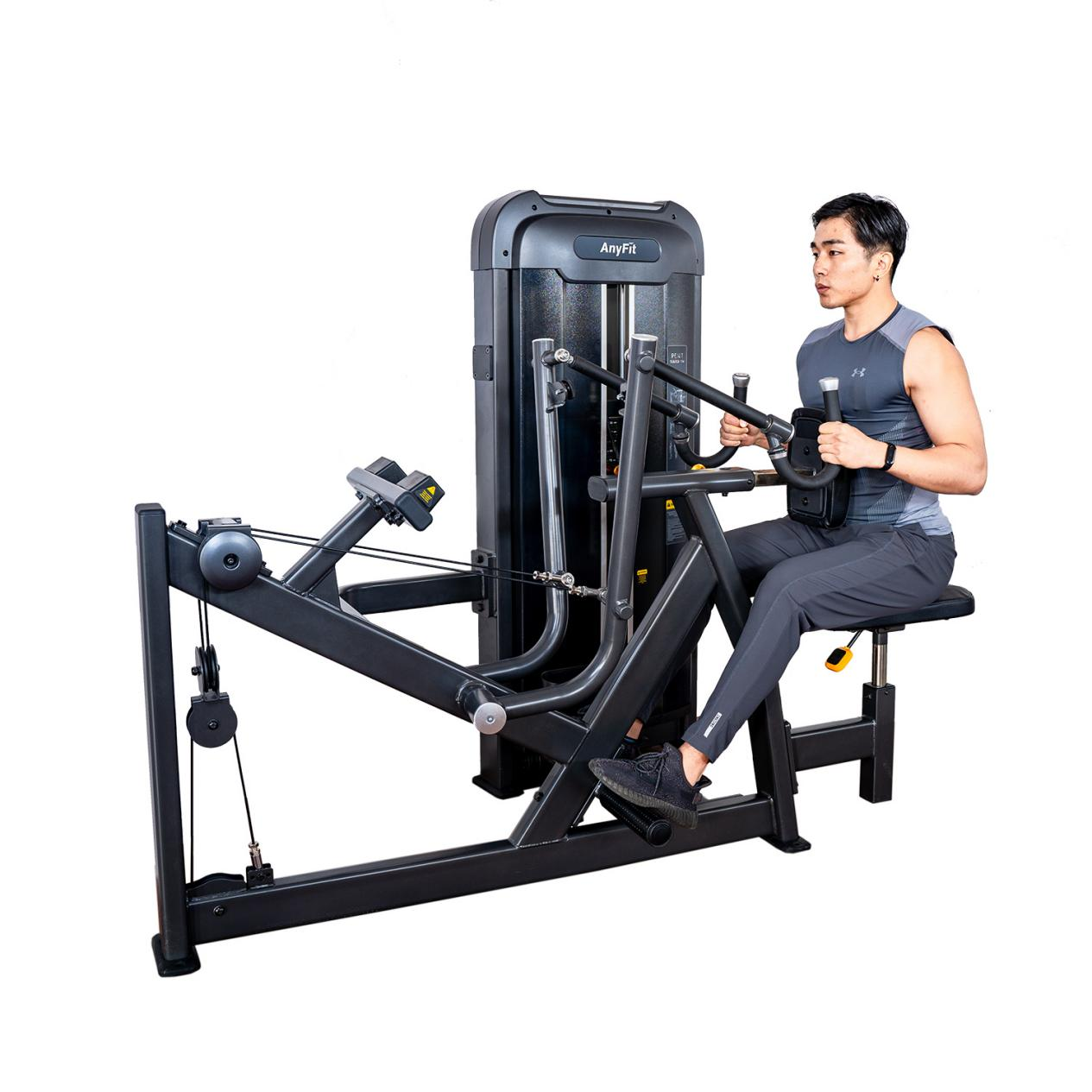The overhead barbell row is a great exercise for the latissimus dorsi muscle, focusing more on the thickness of the latissimus dorsi muscle and working the lower part of the latissimus dorsi muscle. When doing barbell rowing, you need to bend down to a certain angle to have a better workout, but for people with poor lumbar spine stability or lumbar injuries, the bent-over barbell rowing is a more difficult movement to complete.
If you have a problem with your lumbar spine, it is better not to do overhead barbell rowing, especially if you have a serious lumbar spine problem. If you only have a slight pain in your lumbar muscles, you will need to change some details of the movement or use an upward inclined bench to complete the movement when you are doing this movement.
First of all, I would like to introduce why you feel lower back pain when doing bent over barbell rowing.
1. The waist is not straight. The overhead barbell row requires the low back to be completely straight and to remain basically stationary. When the lower back is not straight or moves too much, the lumbar spine is put under more pressure, which can lead to low back pain over time.
The lumbar spine is not straight, mainly exercise without paying attention to the body posture, part of the anterior pelvic tilt of the exerciser in the prone barbell rowing is because there is no timely adjustment of the pelvic angle, resulting in the exercise of the lumbar spine is excessive forward, will also lead to low back pain.
2. Exercise barbell in the low point is too far away from the legs, resulting in the lumbar spine to bear more pressure. At the low point when the arms and the ground is basically perpendicular, the distance between the barbell and the body and the leaning angle is closely related to the leaning angle, the greater the leaning angle, the barbell farther away from the legs. However, some exercisers in order to pursue a greater action stroke, in the leaning angle is not particularly large will also deliberately make the barbell away from the legs, resulting in greater pressure on the lumbar spine, which in time leads to low back pain.
3. The barbell weight is too large, more than the lumbar spine capacity. In the case of standardized movement and strong sense of muscle power, the larger the weight, the better the workout effect. Many people in order to improve the effect of exercise, the pursuit of weight, ignoring the standard of movement and muscle power. The weight of the barbell when rowing exceeds the capacity of the lumbar spine and muscles, which will lead to lumbar pain over time.
In addition to too much weight when working out, the intensity and duration of the workout can also lead to pain in the lower back.
Here are some specific exercise methods.
1. Make the movement standard. Low back straight must pay attention to the relative position of the lumbar spine and the pelvis, side facing the mirror to observe their own low back is straight, you can also look for experienced exercisers front and side to observe their own low back is straight.
2. Adjust the angle of bending. Beginners can bend down 30-45 degrees, experienced exercisers bend down 45-60 degrees, very experienced exercisers can use a greater angle of bend down, such as close to 90 degrees. Lower back pain or discomfort can be appropriate to lift the body to reduce the pressure on the lower back.
3. Bring the barbell as close to the body as possible to reduce the pressure on the lower back. Although the distance between the barbell and the legs at the low point is related to the angle of the dip, when there is lumbar discomfort or pain, appropriately reducing the distance between the barbell and the legs can significantly relieve lumbar pain and discomfort. Although some people believe that the appropriate increase in the distance between the barbell and the legs at the low point can increase the effectiveness of the workout, but the premise of increasing the distance must be the movement standard, the waist can withstand this pressure, and the movement is standard, and the feeling of muscle power is very obvious. Otherwise it will only lead to injuries to the exerciser.
4. Appropriately reduce the barbell weight or replace the action. Usually reduce the weight of the equipment will reduce the effect of exercise, but for the waist has been pain or discomfort of the exerciser, reduce the weight of the equipment is the method of last resort.
Changing movements is also a good way to go. The barbell row is an elbow extension movement, and similar movements include the seated row, etc. The T-bar row is similar to the barbell row, and is not a suitable substitute for the barbell row for those with low back pain or discomfort.
5. Use an upward incline bench to assist with the barbell row. However, an incline bench will limit the stroke and reduce the effect of the exercise. At this time, you can also use dumbbells instead of barbells.
6. The exerciser fully stretches the lumbar muscles and moves the lumbar spine before exercise to avoid excessive tightness of the lumbar muscles. Do a good job of warming up the equipment during exercise. You can use a small weight to do a set of barbell rowing as a warm-up action, and then officially start doing barbell rowing.
Post time: Aug-19-2023

